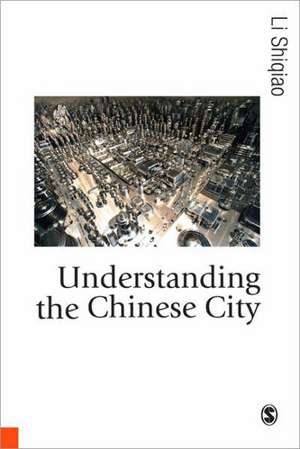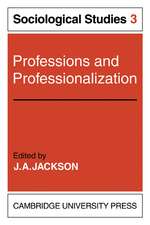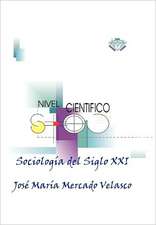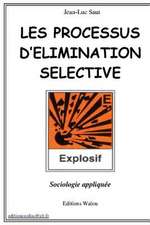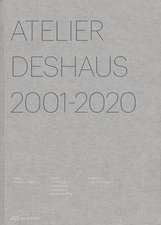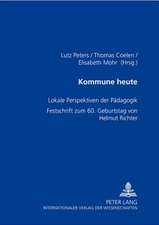Understanding the Chinese City: Published in association with Theory, Culture & Society
Autor Li Shiqiaoen Limba Engleză Paperback – 21 mai 2014
- Li Shiqiao, writing in the South China Morning Post
This book teaches us to read the contemporary Chinese city. Li Shiqiao deftly crafts a new theory of the Chinese city and the dynamics of urbanization by:
- examining how the Chinese city has been shaped by the figuration of the writing system
- analyzing the continuing importance of the family and its barriers of protection against real and imagined dangers
- exploring the meanings of labour, and the resultant numerical and financial hierarchies
- demonstrating how actual structures bring into visual being the conceptions of numerical distributions, safety networks, and aesthetic orders.
Din seria Published in association with Theory, Culture & Society
-
 Preț: 189.83 lei
Preț: 189.83 lei -
 Preț: 444.21 lei
Preț: 444.21 lei -
 Preț: 443.02 lei
Preț: 443.02 lei -
 Preț: 393.44 lei
Preț: 393.44 lei -
 Preț: 280.42 lei
Preț: 280.42 lei -
 Preț: 443.94 lei
Preț: 443.94 lei -
 Preț: 392.73 lei
Preț: 392.73 lei - 8%
 Preț: 445.19 lei
Preț: 445.19 lei -
 Preț: 307.51 lei
Preț: 307.51 lei -
 Preț: 426.59 lei
Preț: 426.59 lei - 22%
 Preț: 372.33 lei
Preț: 372.33 lei -
 Preț: 394.44 lei
Preț: 394.44 lei - 18%
 Preț: 1491.48 lei
Preț: 1491.48 lei - 15%
 Preț: 480.56 lei
Preț: 480.56 lei - 15%
 Preț: 475.52 lei
Preț: 475.52 lei - 15%
 Preț: 486.73 lei
Preț: 486.73 lei - 18%
 Preț: 1364.13 lei
Preț: 1364.13 lei - 18%
 Preț: 1536.08 lei
Preț: 1536.08 lei - 18%
 Preț: 1491.65 lei
Preț: 1491.65 lei - 15%
 Preț: 487.56 lei
Preț: 487.56 lei - 15%
 Preț: 479.46 lei
Preț: 479.46 lei - 15%
 Preț: 479.78 lei
Preț: 479.78 lei - 15%
 Preț: 431.90 lei
Preț: 431.90 lei - 15%
 Preț: 487.05 lei
Preț: 487.05 lei - 18%
 Preț: 1229.47 lei
Preț: 1229.47 lei - 26%
 Preț: 926.68 lei
Preț: 926.68 lei - 18%
 Preț: 1234.14 lei
Preț: 1234.14 lei - 15%
 Preț: 480.44 lei
Preț: 480.44 lei -
 Preț: 479.85 lei
Preț: 479.85 lei - 15%
 Preț: 479.27 lei
Preț: 479.27 lei - 18%
 Preț: 1203.04 lei
Preț: 1203.04 lei - 15%
 Preț: 479.13 lei
Preț: 479.13 lei - 18%
 Preț: 1126.63 lei
Preț: 1126.63 lei - 18%
 Preț: 1234.14 lei
Preț: 1234.14 lei - 15%
 Preț: 478.44 lei
Preț: 478.44 lei - 15%
 Preț: 478.12 lei
Preț: 478.12 lei - 15%
 Preț: 448.04 lei
Preț: 448.04 lei - 18%
 Preț: 1321.90 lei
Preț: 1321.90 lei - 18%
 Preț: 1180.15 lei
Preț: 1180.15 lei - 19%
 Preț: 419.04 lei
Preț: 419.04 lei - 18%
 Preț: 886.71 lei
Preț: 886.71 lei - 18%
 Preț: 1182.37 lei
Preț: 1182.37 lei - 18%
 Preț: 1321.58 lei
Preț: 1321.58 lei - 18%
 Preț: 1074.21 lei
Preț: 1074.21 lei - 15%
 Preț: 428.79 lei
Preț: 428.79 lei -
 Preț: 482.14 lei
Preț: 482.14 lei - 15%
 Preț: 466.03 lei
Preț: 466.03 lei - 18%
 Preț: 1141.40 lei
Preț: 1141.40 lei -
 Preț: 477.89 lei
Preț: 477.89 lei
Preț: 401.49 lei
Nou
Puncte Express: 602
Preț estimativ în valută:
76.84€ • 79.92$ • 63.43£
76.84€ • 79.92$ • 63.43£
Carte tipărită la comandă
Livrare economică 14-28 aprilie
Preluare comenzi: 021 569.72.76
Specificații
ISBN-13: 9781446208830
ISBN-10: 1446208834
Pagini: 264
Dimensiuni: 156 x 234 x 14 mm
Greutate: 0.42 kg
Ediția:New.
Editura: SAGE Publications
Colecția Sage Publications Ltd
Seria Published in association with Theory, Culture & Society
Locul publicării:London, United Kingdom
ISBN-10: 1446208834
Pagini: 264
Dimensiuni: 156 x 234 x 14 mm
Greutate: 0.42 kg
Ediția:New.
Editura: SAGE Publications
Colecția Sage Publications Ltd
Seria Published in association with Theory, Culture & Society
Locul publicării:London, United Kingdom
Recenzii
Asked what was the difference between Japanese space and ‘western' space, Maki declared emphatically: ‘Nothing!’ Tackling differences in spatial thinking from inside both ‘western’ and Chinese thinking, Li Shiqiao demonstrates how mental space, Chinese and 'western,' is determined by culture.
Li Shiqiao reveals continuities between ancient Chinese city formations and current urban organizations where others see only rupture and chaos. No other work on the staggering urban explosion in China so deftly displays the complexities of these current formulations. Bringing an impressive array of disciplines into conversation with each other, this book gestures toward what urban studies could and should be.
Li Shiqiao has written the only book on the Chinese city that captures at once the accelerated hypermodernity of the Shanghai stock exchange and 2500 years of Daoist and Confucian culture. It will be a classic.
If as Wittgenstein suggested, the limits of one’s language set the limits of one’s world, what difference does it make to conceptualise things in a different kind of word and to give an alternative significance to numbers? In this book Li Shiqiao argues that ideas taken for granted in the West and built into our scientific world-view are by no means universal, while concepts such as yin yang, four cardinal points, five phases, the ten heavenly stems and twelve heavenly branches, allowed the ancient Chinese to develop a different conception of space and time. This is reflected in their architecture and town-planning, and must be taken into account if we are to understand it.
The book not only provides a new framework and fresh thinking for research on the Chinese city but also contributes to contemporary urban studies by providing a model for cultural-based research on urbanisation. Understanding the Chinese City is an excellent book. It is suitable not only for academic researchers for research purposes but also for readers interested in Chinese culture.
Li Shiqiao reveals continuities between ancient Chinese city formations and current urban organizations where others see only rupture and chaos. No other work on the staggering urban explosion in China so deftly displays the complexities of these current formulations. Bringing an impressive array of disciplines into conversation with each other, this book gestures toward what urban studies could and should be.
Li Shiqiao has written the only book on the Chinese city that captures at once the accelerated hypermodernity of the Shanghai stock exchange and 2500 years of Daoist and Confucian culture. It will be a classic.
If as Wittgenstein suggested, the limits of one’s language set the limits of one’s world, what difference does it make to conceptualise things in a different kind of word and to give an alternative significance to numbers? In this book Li Shiqiao argues that ideas taken for granted in the West and built into our scientific world-view are by no means universal, while concepts such as yin yang, four cardinal points, five phases, the ten heavenly stems and twelve heavenly branches, allowed the ancient Chinese to develop a different conception of space and time. This is reflected in their architecture and town-planning, and must be taken into account if we are to understand it.
The book not only provides a new framework and fresh thinking for research on the Chinese city but also contributes to contemporary urban studies by providing a model for cultural-based research on urbanisation. Understanding the Chinese City is an excellent book. It is suitable not only for academic researchers for research purposes but also for readers interested in Chinese culture.
Cuprins
Abundance
Quantity Control
The City of Maximum Quantities
The City of Labour
Prudence
The Body in Safety and Danger
Degrees of Care
Antisepsis
Figuration
The Empire of Figures
Memory without Location
Colonies of Beauty and Violence
Quantity Control
The City of Maximum Quantities
The City of Labour
Prudence
The Body in Safety and Danger
Degrees of Care
Antisepsis
Figuration
The Empire of Figures
Memory without Location
Colonies of Beauty and Violence
Notă biografică
Descriere
This book teaches us to read the contemporary Chinese city. Li Shiqiao deftly crafts a new theory of the Chinese city and the dynamics of urbanization. He traces a thread between ancient Chinese city formations and current urban organizations, revealing hidden continuities that show how instrumental the past has been in forming the present.
